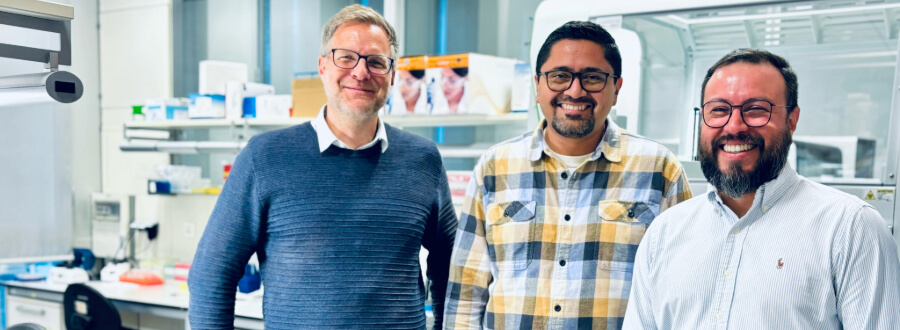
CNAG reconstructs 6 million years of human evolution with the first atlas of cellular adaptation of the immune system
Researchers from the National Center for Genomic Analysis (CNAG), based at the Barcelona Science Park, have reconstructed 6 million years of evolution of the human immune system. This is the first atlas of cellular adaptation of the human immune system, since it separated from the chimpanzee 6 million years ago. The research, published in the journal Nature Communications, shows that among the most adapted immune cells we find those that reside in tissues located in the first line of defense against infections. This is the case in the lung, which is the gateway for respiratory pathogens.
The human immune system has two trillion cells dedicated to defending the body through adaptation by natural selection. However, the constant pressure exerted by pathogens, such as viruses and bacteria, has driven the evolution of these cells over time, thanks to changes in the genes that regulate their function. Now, a new study led by researchers from CNAG, with the participation of researchers from the University of Arizona, has produced the first atlas of cellular adaptation of the human immune system. Identifying the different types and cell states that have played an indispensable role in protecting the body until today.
Adaptive immunity, which acts as a second line of defense by storing information about previous pathogens in its memory, appeared at the same time as the first jawed vertebrate species, approximately 400 million years ago. Since then, the genes of the immune cells of different species have evolved to adapt to the constant threats of bacteria and viruses to which they have been exposed. Only those genes that have continued to provide a benefit have survived over time, through natural selection in the purest Darwinian style.
This first cellular atlas of adaptation of our immune system constitutes a fundamental piece to learn more in depth how the human body defends itself against viruses and bacteria. The map presented by the CNAG includes the most adapted cell families, whose distinctive genes are as old as adaptive immunity, but with evolutionarily recent changes that allow them to fight against the most contemporary threats. The survival of human populations has been largely possible due to the high rate of adaptation that these genes undergo. In this way, the human body’s defense system is, to a large extent, the sum of mutations in genes accumulated over millions of years. These mutations at one time were crucial to defeat diseases such as malaria or the black plague, and which have more recently done so with covid.
According to Dr. Holger Heyn, senior author of the study and Head of the Single Cell Group at CNAG “With a completely data-driven approach, analysing all cell types in all tissues simultaneously, we discovered that the greatest human adaptation occurs at strategic locations in the organism, at the gateway of pathogens. We find that immune cells residing in barrier tissues are our first line of defense and have been shaped by external challenges during our evolution as a species”.
Frontline immune cells: the most adapted
The research was based on transcriptomic data provided by the international Human Cell Atlas project, whose objective is to obtain a map of all the cells of the human body. For the CNAG study, gene expression was analysed in 1.2 million immune cells from different organs such as the bone marrow, digestive system, liver and lungs, both in the prenatal stage and in adults.
In this way, Dr. Heyn’s team has been able to identify the most distinctive genes in the different cell types and, using a population genetics approach (integrating genomic information from different human populations with genomic information from primates evolutionarily closest to humans), they have been able to determine the adaptation that these genes have undergone. This has allowed them to develop an exhaustive map of cellular adaptation, capturing two key moments of the human defense system: its initial stage, where it begins to form, and a more advanced state, shaped by the interaction and pressure of pathogens.
In this evolutionary radiography of human immunity, the highest rates of adaptation have been found both in cells that play a key role in the body’s homeostasis, with functions of maintenance and balance of the system. In the front line of battle, mainly in those tissues that are in direct contact with pathogens. These tissues represent a natural border through which viruses and bacteria enter the body. It is precisely here where such high evolutionary pressure occurs that immune cells, such as resident memory T cells (Trm) or NK cells (Natural Killer, intended to eliminate infections), are forced to adapt to defend the body.
According to Dr. Irepan Salvador-Martínez, first author and researcher at CNAG “This study has allowed us to have a retrospective view of the evolutionary forces that have forged our immune system, and the results take on special relevance in demonstrating that cells that have had a greater rate of adaptation, such as resident T cells (Trm), are now recognized for their immune role against pathogens and for having the potential to be exploited in the design of vaccines”.
» Article of reference: Salvador-Martínez, I., Murga-Moreno, J., Nieto, J.C. et al. Adaptation in human immune cells residing in tissues at the frontline of infections. Nat Commun 15, 10329 (2024) doi: 10.1038/s41467-024-54603-5
» Link to the news: CNAG website [+]




